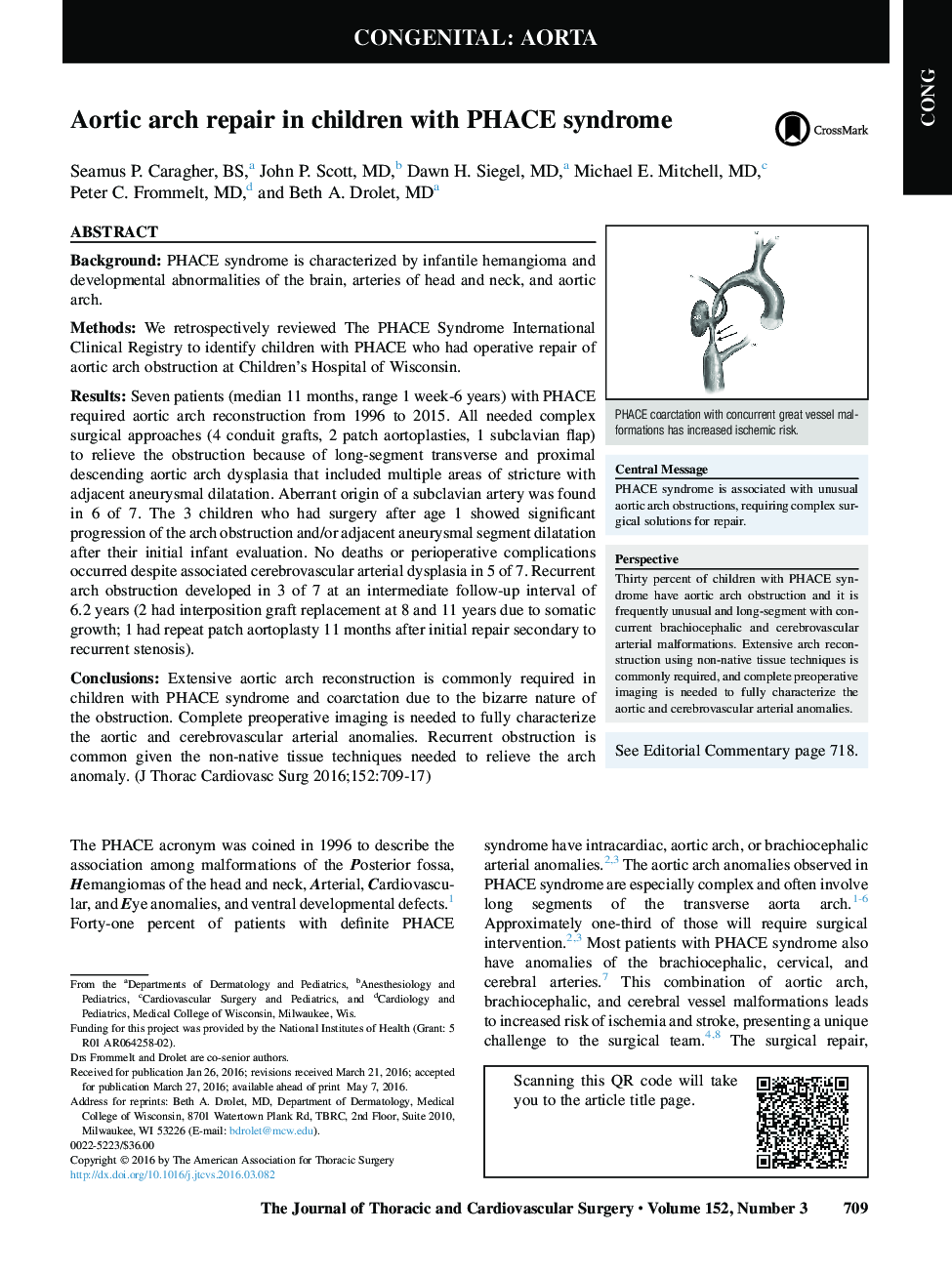| Article ID | Journal | Published Year | Pages | File Type |
|---|---|---|---|---|
| 2978752 | The Journal of Thoracic and Cardiovascular Surgery | 2016 | 9 Pages |
BackgroundPHACE syndrome is characterized by infantile hemangioma and developmental abnormalities of the brain, arteries of head and neck, and aortic arch.MethodsWe retrospectively reviewed The PHACE Syndrome International Clinical Registry to identify children with PHACE who had operative repair of aortic arch obstruction at Children's Hospital of Wisconsin.ResultsSeven patients (median 11 months, range 1 week-6 years) with PHACE required aortic arch reconstruction from 1996 to 2015. All needed complex surgical approaches (4 conduit grafts, 2 patch aortoplasties, 1 subclavian flap) to relieve the obstruction because of long-segment transverse and proximal descending aortic arch dysplasia that included multiple areas of stricture with adjacent aneurysmal dilatation. Aberrant origin of a subclavian artery was found in 6 of 7. The 3 children who had surgery after age 1 showed significant progression of the arch obstruction and/or adjacent aneurysmal segment dilatation after their initial infant evaluation. No deaths or perioperative complications occurred despite associated cerebrovascular arterial dysplasia in 5 of 7. Recurrent arch obstruction developed in 3 of 7 at an intermediate follow-up interval of 6.2 years (2 had interposition graft replacement at 8 and 11 years due to somatic growth; 1 had repeat patch aortoplasty 11 months after initial repair secondary to recurrent stenosis).ConclusionsExtensive aortic arch reconstruction is commonly required in children with PHACE syndrome and coarctation due to the bizarre nature of the obstruction. Complete preoperative imaging is needed to fully characterize the aortic and cerebrovascular arterial anomalies. Recurrent obstruction is common given the non-native tissue techniques needed to relieve the arch anomaly.
